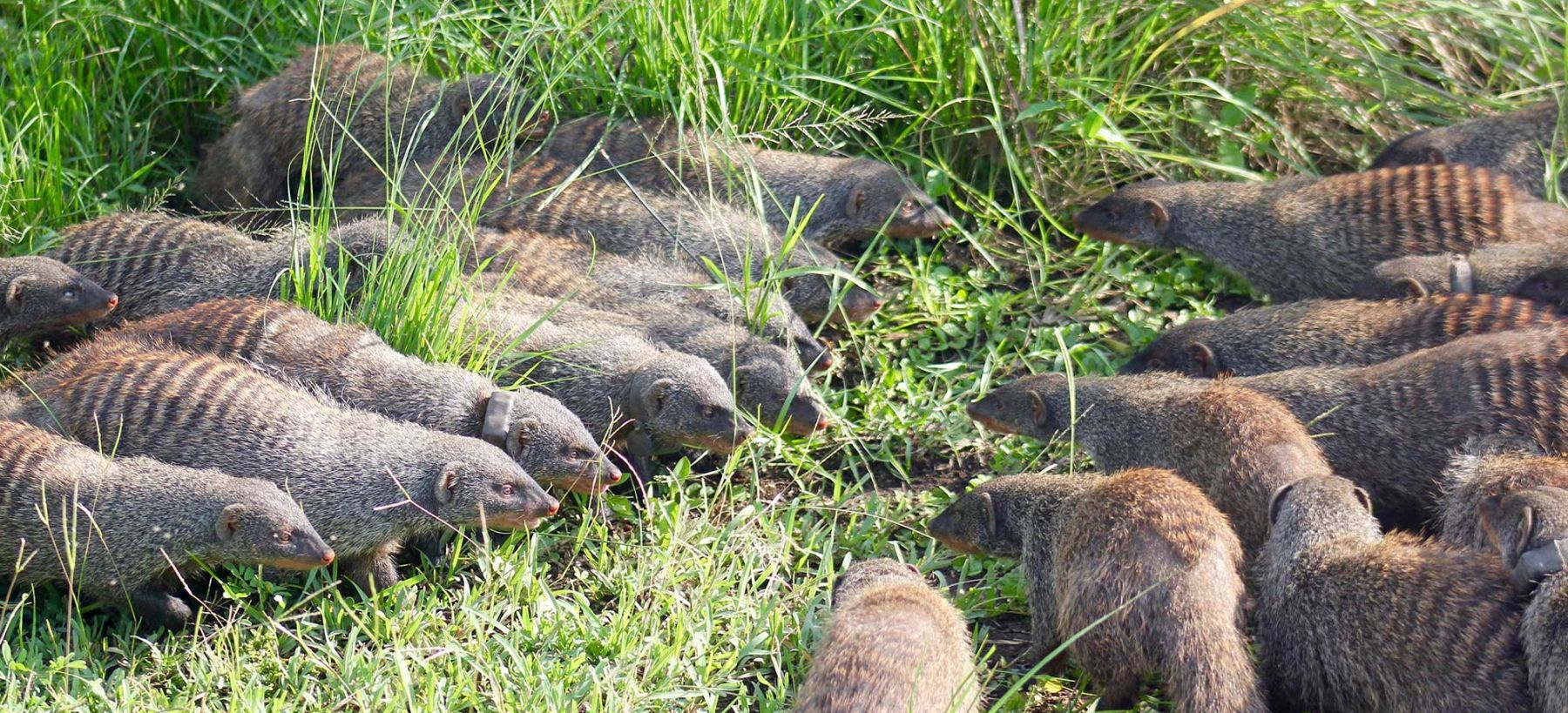Most of our knowledge about assessment during contests comes from dyadic, or one-on-one contests. However, groups of social-living animals also regularly compete with each other, in what are called "intergroup contests". Just as understanding fighting ability and assessment in dyadic contests can teach us about the evolution of animal form and behavior, learning about assessment in intergroup contests might reveal insights to social evolution. Studying these contests can also reveal what makes some groups perform better or worse than others; that is, what makes a group successful?
Banded mongooses (Mungos mungo) live in stable social groups of ~20 adults, plus pups, and regularly compete at territorial boundaries. What’s more, these contests can be extremely dangerous—banded mongooses suffer death rates from intergroup contests on par with those of human hunter-gatherer societies. My research with this system tests questions from dyadic contests that can help us understand social evolution and that can reveal what makes a group perform better in the context of competition.
Discoveries
- Banded mongoose group fighting ability manifests at both a group and individual level. Groups with more males than their rivals, and in which the oldest male is older than the rival's oldest male, are more likely to win. Aspects of within-group behavior like helping and eviction match the importance of males, and old males, to contest success (Green et al., PNAS, 2022).
- Group members increase their use of defensive behaviors in the presence of an intergroup threat, but group members do not coalesce toward using similar behaviors as each other (i.e., there may be division of labor). This finding might relate to the classic hypothesis that within-group cohesion increases in the face of out-group conflict (Green et al., Ethology, 2021).
- Banded mongoose males are motivated to fight to defend their paternity, as estrous (reproductively receptive) females from their group can mate with rival group males during fights! However, even though groups with estrous females win fights against groups without--suggesting a motivation to win by groups with estrous females--groups that win can still lose paternity over their juveniles! These results suggest a disconnect between fighting success and fitness success (Green et al., in prep).
- Overall, links between dyadic and intergroup conflict are ripe to be made across taxa. Making these links can tell us about the evolution of sociality under the selective pressure of intergroup conflict (Green et al., Trends in Ecology & Evolution, 2020).
Future Questions
- How do resources, such as contested territory or pups, influence assessment behavior in banded mongooses?
- Do groups show “winner” and “loser” effects: do winning groups tend to win, and losing groups tend to lose? If so, can losing groups enter a “death spiral” where losses mount, leading to group disbandment?
- The "conflict-cohesion" hypothesis in human sociology suggests that in-group cohesion increases in the face of out-group threat. Does this hypothesis hold in non-human animals, and how can work from human and non-human animals be better connected?
